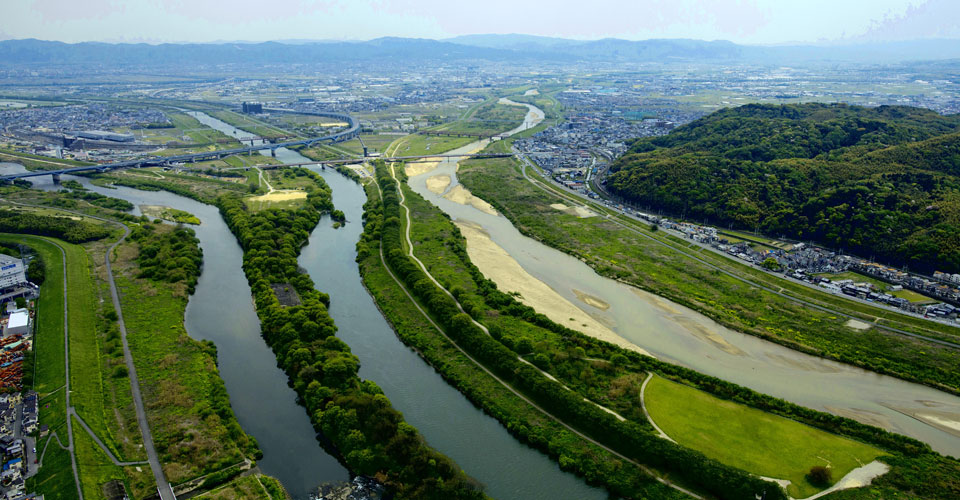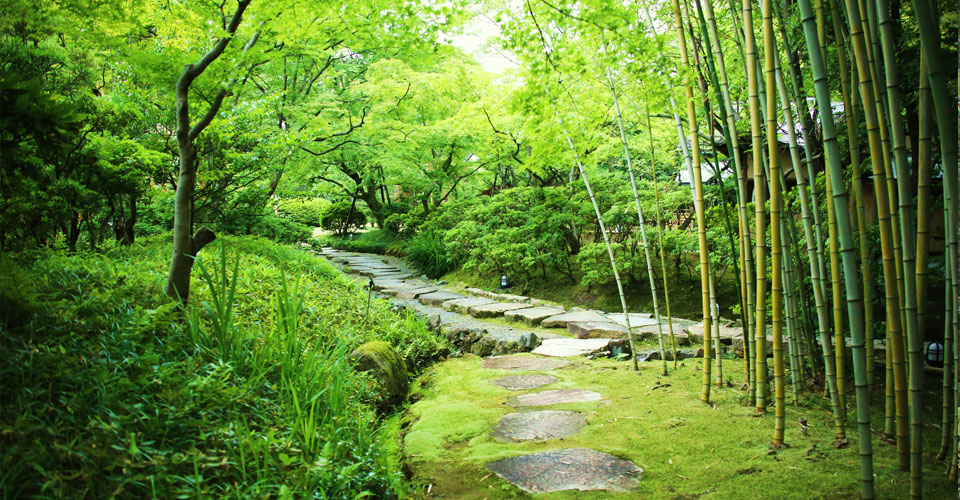Iwashimizu Hachimangu Shrine, a National Treasure
-
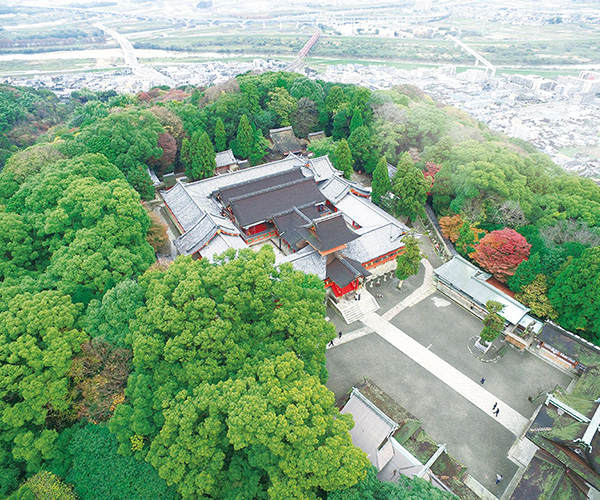
-
The Iwashimizu Hachimangu Shrine was designated as a national treasure in 2016 for its 10 shrine buildings including the main shrine constructed in the traditional hachiman-zukuri architectural style, and three plaques that record historical data such as the date of repair or the carpenter in charge.
The shrine is known for heavily exhibiting the influence of the syncretic fusion of foreign-imported Buddhism and the ancient indigenous religion of Shintoism.The shrine sits atop Mt. Otokoyama, gateway to the southwest quarter of the ancient capital of Kyoto.
It was originally built there because Gyokyo, a Buddhist monk who lived during the Heian period (794–1185), received a divine message at Usa Hachimangu Shrine on the island of Kyushu in 859, telling him to enshrine Hachiman, the tutelary god of warriors, on the mountain to protect the country. As one of three major shrines in Japan built to enshrine Hachiman, the Iwashimizu Hachimangu Shrine is considered the second imperial ancestral mausoleum after the Ise Grand Shrine.After the main buildings were restored by Oda Nobunaga, the corridors rebuilt by Toyotomi Hideyoshi, and the main buildings rebuilt by Toyotomi Hideyori, the current shrine buildings were built by Tokugawa Iemitsu.
The main shrine in particular is a grand complex built in the hachiman-zukuri style, surrounded by an inner and outer sanctuary that span 11 columns (nearly 40 m). The main shrine is the oldest and largest structure of its kind in Japan.Though it has stood for so long, the Iwashimizu Hachimangu Shrine still imparts the importance of peace and friendship while conveying the distinct religious culture of Japan, where it is believed that both gods and Buddha accept all things and cherish all forms of life.
Highlights
-
Beautiful Architecture
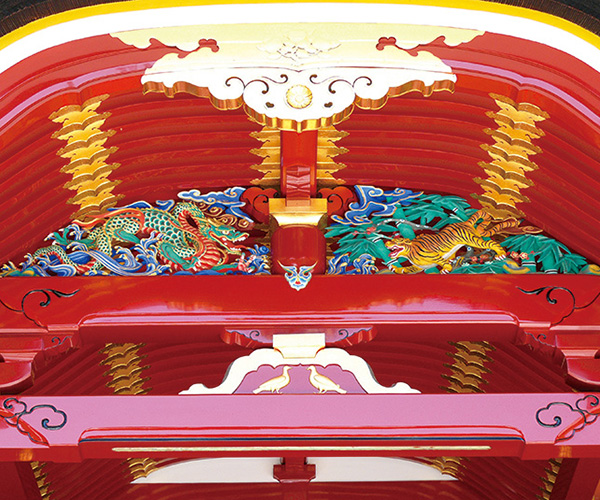
This tower gate features a frog-leg strut and transom carvings
All main building structures are finished with cinnabar lacquer.
The richly colored carvings at every turn—namely the transom carvings on the sacred enclosure of the main shrine—were created long ago by master craftsmen. -
Ruins of the 48 Temples of Otokoyama
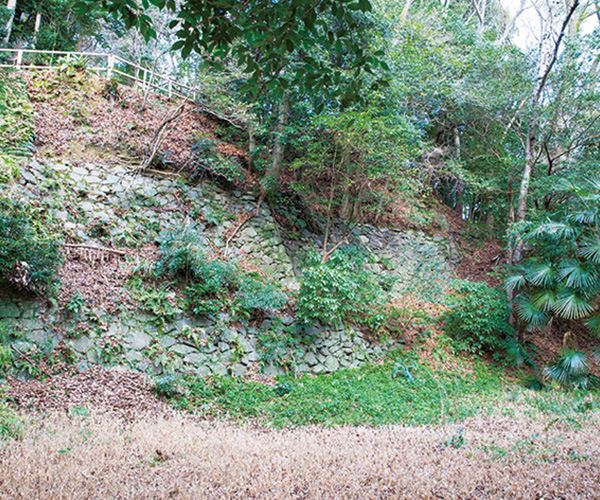
Ruins of Shokado at Izumi-bo, a historical site
The grounds contain the ruins of many famous Buddhist temples, including the Izumi-bo with its thatched cottage named Shokado, and the Takimoto-bo with its “teahouse in the sky” named Kan'unken.
-
Iwashimizu-sha Shrine
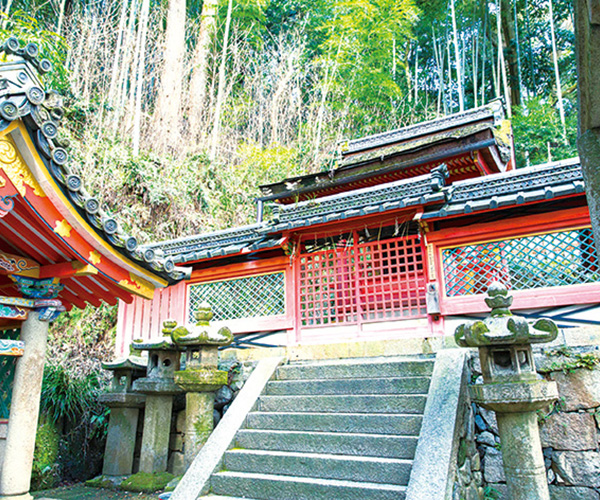
Iwashimizu-sha Shrine
Situated on the slopes of Mt. Otokoyama, along with the shrine’s namesake, a sacred spring called Iwashimizu.
The history of this sacred place starts even before the construction of the Iwashimizu Hachimangu Shrine. -
Abundant Nature
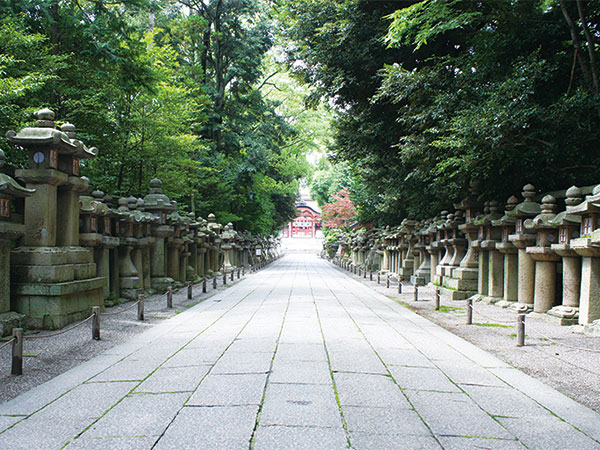
Lanterns on the path leading to the shrine
The main buildings were constructed on the summit of Mt. Otokoyama, and are surrounded by camphor trees and other broadleaf evergreens. Visitors can enjoy taking a leisurely walk through the forest.

